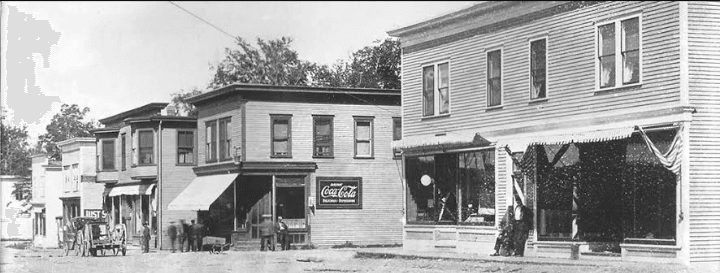The Early Development of East Millinocket: From Farms to Paper Mills…
The history of East Millinocket, a town that played a significant role in Maine’s paper industry, is one rooted in early settlement, farming, and the eventual rise of industrialization. The area, with its plentiful wood and water resources, was primed for the development of paper mills that would shape its future.
In the early 19th century, East Millinocket was largely uncharted territory for settlers. The first known European settler in the area was George McCauslin, who in the 1830s made history by becoming the first white man to settle in what would later be called East Millinocket. His arrival marked the beginning of the town’s transformation from wilderness to farmland. McCauslin’s homestead was eventually followed by that of Thomas Fowler Jr., who moved his family into the region sometime after 1845, becoming the second family to settle there. The Fowler family became a significant part of the area’s early agricultural history.
In 1860, John Fowler took over the farm of his father, Thomas Fowler, marking another generational shift in the region. The Fowler family farmed the land for several decades, but by 1892, the farm was relinquished to John Powers, who would own it until 1906. That year, Powers sold the property to the Great Northern Paper Company, a key player in the town’s industrial future.
The development of East Millinocket as an industrial hub began with the foresight of Charles Powers, who in 1899 purchased the McCauslin farm. However, the most pivotal figure in the area’s industrialization was Charles Mullen, a lumberman with a keen understanding of engineering and paper production. Mullen recognized the potential of the region’s abundant natural resources and sought to bring these to the attention of Garret Schenck, the manager of Rumford Falls Co. Schenck shared Mullen’s vision, and together they founded the Northern Development Company in 1897, which would eventually become the Great Northern Paper Company two years later.
The company’s first major endeavor was the construction of a new paper mill in Millinocket in 1899. This mill became the starting point for the company’s success, and during its construction, Great Northern Paper Company also acquired a mill in Madison, which became its first operational unit. By November 1900, the Millinocket mill produced its first sheet of paper, marking a key milestone in the company’s growth.
The next phase of development occurred in East Millinocket in 1906 when construction began on a third mill. Designed to house four paper machines, this mill was accompanied by the construction of a dam and power development projects, including a second dam at Dolby Pitch. The creation of these dams would play a significant role in East Millinocket’s transformation, as they helped to harness the region’s natural resources to power the new industrial operations. This new power infrastructure also included a hydroelectric station and a grinder room, facilitating the production of paper.
Prior to the construction of the mill, East Millinocket’s population had been small, consisting mainly of the families of John and Charles Powers, who lived on the farms that had been cleared by earlier settlers. However, the construction of the Great Northern Paper Company’s mill marked the beginning of significant change. The dam at Dolby created a large artificial pond that submerged the farms of the Powers families, symbolizing the end of the region’s agricultural era.
By August 1907, the mill in East Millinocket began producing paper, with two machines operational, and a third machine being installed. This marked the beginning of East Millinocket’s transformation into an industrial town, a transformation that would continue throughout the 20th century. The paper mill’s operations brought economic growth, a new workforce, and a sense of purpose to the region, setting the stage for the town’s future as a center of paper production in Maine.
The story of East Millinocket is one of change, where agricultural roots gave way to industrial might, and where the foresight of a few individuals played a key role in shaping the town’s destiny.


